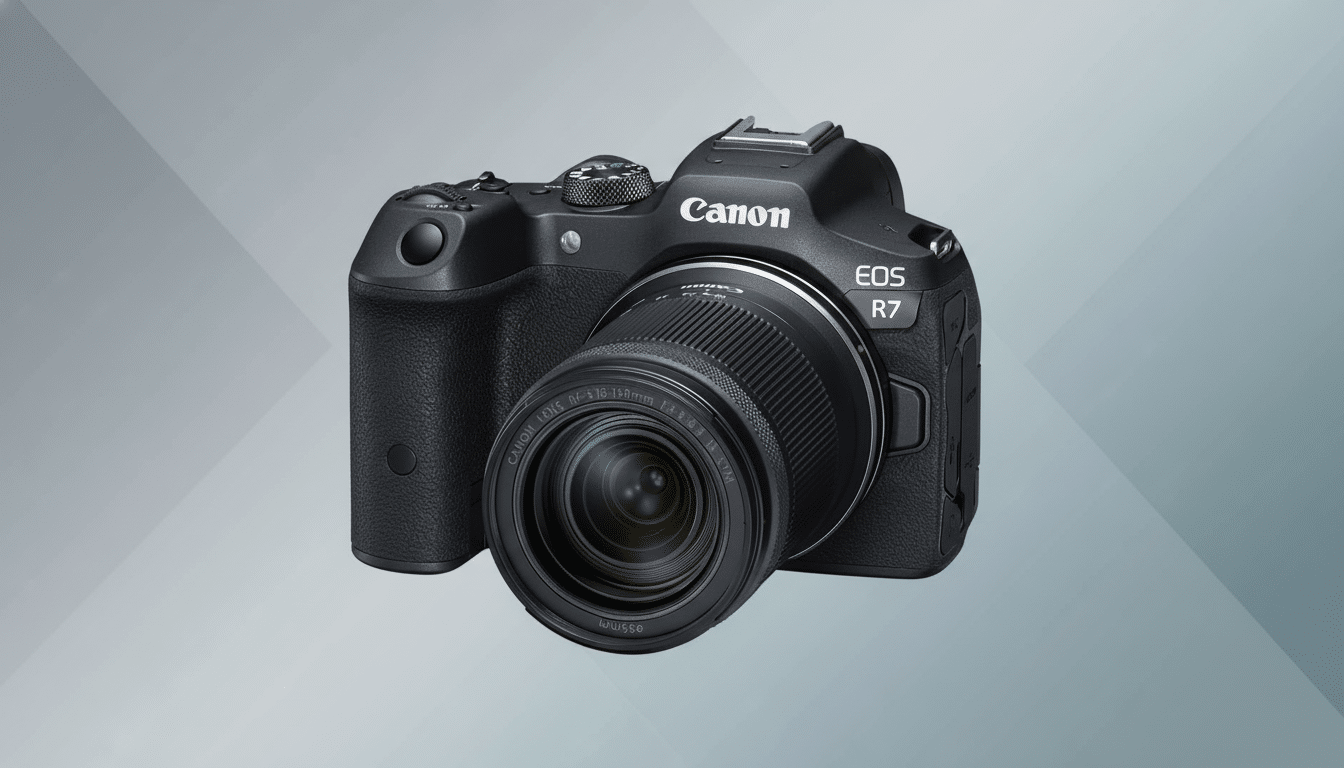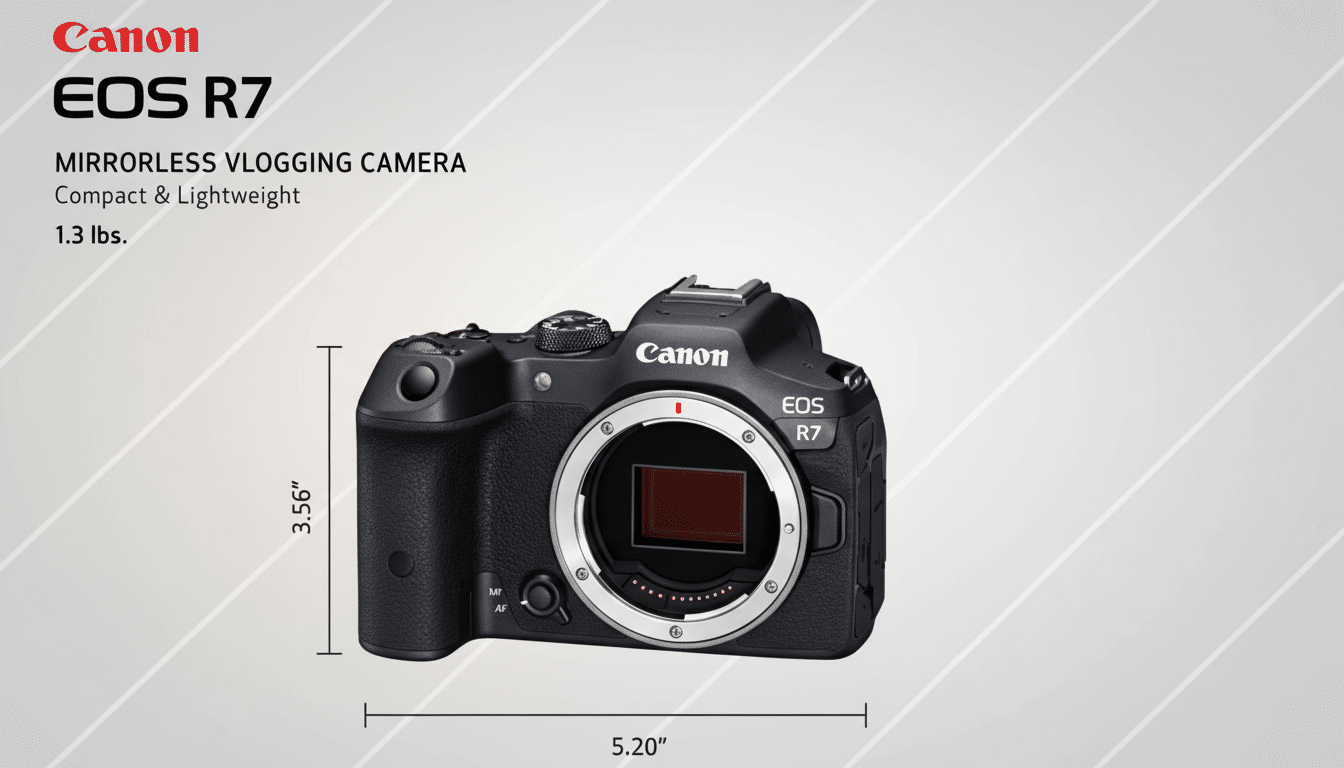A deep discount just landed on Canon’s high-speed APS-C mirrorless body, the EOS R7, slashing $360 off the usual kit price. That means the popular 18-150mm kit lands at around $1,789 with one of the major retailers — a tempting price range for shooters who want quick autofocus, in-body stabilization and 4K video without going full-frame prices.
Why This Canon EOS R7 Deal Stands Out Right Now
Significant discounts on current-generation enthusiast cameras can be hard to come by outside of tentpole shopping events. Market trackers at Circana report that camera ASPs are still holding up in the face of crippled launches and niche demand. So in comparison, the $360 discount on a body-lens kit with this performance level looks decent and is usually very temporarily available to grab.

The R7 sits in a sweet spot in Canon’s RF lineup: faster than entry APS-C models, much more affordable than full-frame options and robust enough to suit serious action, wildlife and travel photographers.
If you’ve been biding your time for a sub-$2,000 hybrid setup that has some real speed, this is the sort of dip that makes it okay to start moving on one now.
What You Get With the Canon EOS R7 Camera Kit
The EOS R7 combines a 32.5MP APS-C sensor with Canon’s Dual Pixel CMOS AF II technology to bring you sticky subject detection for humans, animals and vehicles. It shoots up to 15 fps with the mechanical shutter (or up to 30 fps electronic), supported by in-body image stabilization rated for up to seven stops, steadying handheld telephoto shots and low-light frames.
Video shooters receive 4K up to 60p, 10-bit 4:2:2 recording, Canon Log 3 for grading flexibility and HDR PQ. The details matter as well: dual UHS-II SD card slots for redundancy, a weather-sealed body that’s ready for fieldwork and the most common — the LP-E6-series battery — offering easy spares and familiar endurance. Canon’s own literature even touts that it has AF algorithms pulled from more expensive bodies, and indie testers have praised autofocus confidence for birds-in-flight and sideline sports.

The included RF-S 18-150mm lens provides a versatile, 29-240mm equivalent focal length range for travel, events and everyday life. It’s not a pro telephoto, but its light weight and reach make it an intelligent companion while you decide on specialty glass.
How the Canon EOS R7 Stacks Up Against Rivals
Compared with peers like the Sony a6700 and Fujifilm X-T5, the R7 favors speed, stabilization and ergonomics. Sony comes back with deep video tooling and a deep bench of APS-C lenses, while Fujifilm wins on resolution and film simulations. The Canon’s strengths come into play when you’re tracking erratic subjects, firing bursts from the stands, or steadying long lenses in the field.
For wildlife, the APS-C crop is a clear winner: it effectively gives you more focal length for less glass and weight without interfering with light gathering. One reason for its reach advantage is more anecdotal, but I’ll bet if we had usage data from enthusiast sites and specialty retailers it’s a trend that would be confirmed: a lot of hobbyist birders flock to APS-C.
Who Should Buy the Canon EOS R7 Mirrorless Kit
If you’re shooting youth sports on weekends, tracking pets and kids, want a travel rig that works for both stills and 4K video or can’t imagine paying three grand for any product with an “X” in its name, the R7 fits the brief. It’s also a solid second body for full-frame Canon shooters who want a little extra reach, with the menus and colors they are used to. Vloggers or creators who like to travel light will also love the stabilization, focusing and crispy 4K footage straight from the camera.
If your work is dominated by dim indoor video or ultra-shallow depth-of-field portraits, look at a full-frame alternative such as Canon’s higher-end RF bodies; a larger sensor aids low light and offers more background blur per similar fields of view.
Shopping Notes Before Checking Out With the EOS R7
- Lens ecosystem: RF-S options are expanding but remain more limited compared with rival APS-C ecosystems; on the positive side — full-frame RF lenses will work just as nicely with the R7, so you can invest up front and upgrade your bodies later.
- Video modes: Quality of 4K varies depending on frame rate and mode; some include a little more crop or line-skipping. I’d recommend planning your settings in advance for best performance, and use V60 UHS-II cards or faster when you’re shooting high-bitrate 4K or extended bursts.
- Shutter selection: The electronic shutter is what allows those headline 30 fps, but fast pans can exhibit rolling-shutter artifacts. The mechanical shutter is fast enough at 15 fps for serious work — not too slow for action and not so fast that it will screw up many more shots.
- Bottom line: With the extra $360 off that kit price, it makes the EOS R7 an absolute steal for an enthusiast filmmaking mirrorless camera while also being a great action camera. Though mirrorless cameras have overshadowed DSLRs in shipments for several years according to the industry group CIPA, moves like this on a modern, stabilized RF-mount body are exactly the sort of inflection point that alert photographers scout out.

